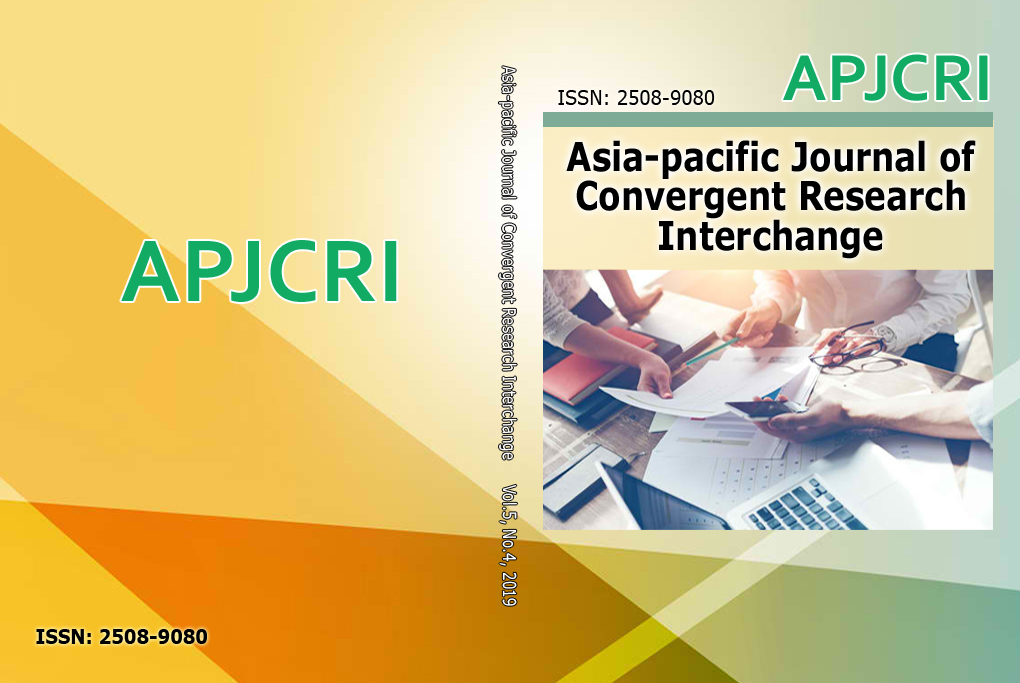References:
[1] P. Cooke, Knowledge Economics: Clusters, Learning and Cooperative advantage, Routlege, (2002)
[2] J. P. Meyer, N. J. Allen, Commitment in the Workplace: Theory, Research and Application, Human Resource Development Quarterly, (1997), Vol.9, pp.309-312.
[3] J. E. Mote, R&D Ecology: Using 2-mode Network, Analysis to Explore Complexity in R&D Environments, Journal of Engineering and Technology Management, (2005), Vol.22, No.1-2, pp.93-111.
DOI: https://doi.org/10.1016/j.jengtecman.2004.11.004
[4] R. Cross, A. Parker, The Hidden Power of Social Networks, Boston: Harvard Business School Press, (2004)
[5] Q. K. Mahmood, Ghaznavi, M. Perry, P. Toulson, K. Logan, What Managers Think of Informal Networks and Knowledge Sharing by Means of Personal Networking? World Academy of Science, Engineering and Technology, (2012), Vol.6, No.12, pp.3408-3414.
DOI: https://doi.org/10.5281/zenodo.1060395
[6] S. Zhu, J. Hagedoornc, S. Zhang, F. Liu, Effects of Technological Distance on Innovation Performance under Heterogeneous Technological Orientations, Technovation, (2021), Vol.106, 102301.
DOI: https://doi.org/10.1016/j. technovation.2021.102301
[7] J. Gary, Social Behavior and Organizational Processes, Organizational Behavior: Understanding and Managing Life at Work, Harper Collins College Publishers, (1996)
[8] R. Cowan, N. Jonard, Modular Organization and Informal Structure: Modularity, Performance, and the Alignment of Organizational Networks, Industrial and Corporate Change, (2023), Vol.32, No.1, pp.181-207. DOI: https://doi.org/10.1093/icc/dtac050
[9] J. Wen, W. J. Qualls, D. Zeng, To Explore or Exploit: The Influence of Inter-firm R&D Network Diversity and Structural Holes on Innovation Outcomes, Technovation, (2021), Vol.100, 102178.
DOI: https://doi.org/10.1016/j.technovation.2020.102178
[10] M. N. K. Saunders, D. E. Gray, H. Goregaokar, SME Innovation and Learning: the Role of Networks and Crisis Events, European Journal of Training and Development, (2014), Vol.38 No.1/2, pp.136-149.
DOI: https://doi.org/10.1108/EJTD-07-2013-0073
[11] J. Tell, An Informal Approach to Management Development at Small and Medium-sized Manufacturing Companies, International Journal of Information and Operations Management Education, (2016), Vol.6, No.2, pp.135-146.
DOI: https://doi.org/10.1504/IJIOME.2016.076047
[12] Ø. Moen, J. D. Benum, I. Gjærum, Exploring Informal and Formal Learning Activities as Enablers of Learning-by- Exporting in Small and Medium Sized Firms, Advances in Global Marketing, (2018), pp.127-146. DOI: https://doi.org/10.1007/978-3-319-61385-7_6
[13] A. H. Gausdal, Methods for Developing Innovative SME Networks, Journal of the Knowledge Economy, (2015), Vol.6, No.4, pp.978-1000.
DOI: https://doi.org/10.1007/s13132-013-0169-0
[14] R. Cross, S. P. Borgatti, A. Parker, Making Invisible Work Visible: Using Social Network Analysis to Support Strategic Collaboration, California Management Review, (2002), Vol.44, No.2, pp.25-46.
DOI: https://doi.org/10.2307/4116612
[15] L. L. Bryan, C. Joyce, The 21st-century Organization, The McKinsey Quarterly, (2005), No.3, pp.21-29.
Available from: https://michaelsamonas.gr/images/Mixalhs/resources/21st_Organization.pdf
[16] J. C. M. Björk, M. G. Magnusson, Ideation Performance in Projects and Informal Groups, Center for Business Innovation Working Paper Series, (2008), Vol.13.
Available from: https://www.researchgate.net/publication/253311343_Ideation_performance_in_projects_and_Informal_groups
[17] P. Anklam, The Social Network Toolkit: Building Organisational Performance Through Collaborative Communities, London: Ark Group, (2005)
[18] D. Krackhardt, J. Hanson, Informal Networks: the Company Behind the Chart, Harvard Business Review, (1993), Vol.71, No.4, pp.104-111.
[19] J. Allen, A. D. James, P. Gamlen, Formal versus Informal Knowledge Networks in R&D: A Case Study Using Social Network Analysis, R&D Management, (2007), Vol.37, No.3, pp.179-196.
DOI: https://doi.org/10.1111/j.1467-9310.2007.00468.x
[20] F. Farveh, E. Osseh, The Effects of Informal Groups on Organizational Performance: A Case Study of IRAN, Interdisciplinary Journal of Contemporary Research in Business, (2012), Vol.3, No.12, pp.364-374.
[21] M. Hoegl, H. G. Gemuenden, Teamwork Quality and the Success of Innovative Projects: A Theoretical Concept and Empirical Evidence, Organization Science, (2001), Vol.12, No.4, pp.435-449.
DOI: https://doi.org/10.1287/orsc.12.4.435.10635
[22] https://www.fki.or.kr/main/news/statement_detail.do?bbs_id=00034387&category=ST, Jan 20 (2023)
[23] S. Kim, W. Jin, B. Kim, Comparison of Patent Performance through Technological Innovation Support of SMEs, STEPI, (2022)
Available from: https://stepi.re.kr/site/stepiko/report/View.do?reIdx=311&cateCont=A0501
[24]https://www.rnd.or.kr/user/infoservice/coverage_view.do?currentPage=1&DATA_SEQ=DATA_290&BOARD_SEQ=290&recordCountPerPage=10&search=title&searchValue=, Dec 5 (2022)
[25] Ned kock, Media naturalness theory: Human Evolution and Behaviour towards Electronic Communication Technologies, (2011), pp.380-398.
DOI: https://doi.org/10.1093/acprof:oso/9780199586073.003.0023
[26] S. Jeong, G. N. McLean, S. Park, Understanding Informal Learning in Small-and Medium-sized Enterprises in South Korea, Journal of Workplace Learning, (2018), Vol.30, No.2, pp.89-107.
DOI: https://doi.org/10.1108/JWL-03-2017-0028
[27] M. Maier, A. Brem, What Innovation Managers Really Do: A Multiple-Case Investigation into the Informal Role Profiles of Innovation Managers, Review of Managerial Science, (2018), Vol.12, pp.1055-1080.
DOI: https://doi.org/10.1007/s11846-017-0238-z
[28] J. Brennecke, O. N. Rank, The Interplay between Formal Project Memberships and Informal Advice Seeking in Knowledge-Intensive Firms: A Multi-level Network Approach, Social Networks, (2016), Vol.44, pp.307-318.
DOI: https://doi.org/10.1016/j.socnet.2015.02.004
[29] https://overseas.mofa.go.kr/oecd-ko/brd/m_20807/view.do?seq=248&page=1, Jan 22 (2023)
[30] S. Sim, H. Seo, A Study on the Effect of Network Activity Characteristics on the Technological Innovation Performance: Focused on Relational Capital, Asia Pacific Journal of Business, (2019), Vol.10, No.4, pp. 49-63.
DOI: https://doi.org/10.32599/apjb.10.4.201912.49
Citations:
APA:
Yang, J. W., Choi, G. (2023). Utilization Assessments of Informal Networks for Firm’s R&D Center in Korea. Asia-pacific Journal of Convergent Research Interchange (APJCRI), ISSN: 2508-9080 (Print); 2671-5325 (Online), KCTRS, 9(3), 143-157. doi: 10.47116/apjcri.2023.03.13.
MLA:
Yang, Jin woo, et al. “Utilization Assessments of Informal Networks for Firm’s R&D Center in Korea.” Asia-pacific Journal of Convergent Research Interchange, ISSN: 2508-9080 (Print); 2671-5325 (Online), KCTRS, vol. 9, no. 3, 2023, pp. 143-157. APJCRI, http://apjcriweb.org/content/v9n3/13.html.
IEEE:
[1] J. W. Yang, G. Choi, “Utilization Assessments of Informal Networks for Firm’s R&D Center in Korea.” Asia-pacific Journal of Convergent Research Interchange (APJCRI), ISSN: 2508-9080 (Print); 2671-5325 (Online), KCTRS, vol. 9, no. 3, pp. 143-157, March 2023.
